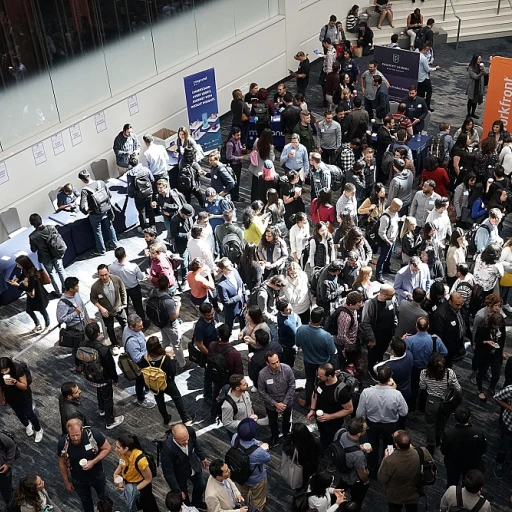
Understanding the Alam Course Concept
The quest for knowledge has given rise to diverse methods of learning, each bearing unique advantages. Among these innovative education pathways is the "Alam Course," a concept born out of the need for specialized maritime education and training. In the vibrant landscape of education, new skills and expertise are immensely valued, and understanding the essence of an Alam Course can guide learners on their continuous learning journey.
What is the Alam Course?
An Alam Course, often associated with the Akademi Laut Malaysia (ALAM), is specifically designed for those pursuing a career in the maritime industry. These courses aim to equip students with the necessary skills and qualifications for successful navigation of the demanding maritime landscape. From nautical studies and marine engineering to maritime management, these courses emphasize practical knowledge and hands-on training.
Courses such as the diploma in maritime or the STCW modular programs focus on critical areas crucial for maritime operation and safety. Additionally, specialized short courses in ship handling and maritime management complement the broader educational framework, preparing learners for real-world challenges in maritime education and management.
Maritime Education and Technological Integration
Integral to the Alam Course is its emphasis on state-of-the-art technology and equipment. As the maritime industry increasingly adopts new technologies such as semiconductor devices, education in this sector must also evolve. Alam courses harness these advancements within their curriculum, preparing students for roles in both engineering and management.
Campuses in Malaysia provide full training opportunities, ensuring students receive complete and comprehensive education experiences. The academic programmes are structured to not only impart technical knowledge but also develop skills in leadership and business management. The course calendar is designed to support students through a journey reflective of the mission ship approach, building a successful maritime career.
As the demand for skilled professionals in the global maritime sector grows, leading maritime academies like Akademi Laut Malaysia champion courses maritime students need for career advancement. Those engaged in this educational journey are set to meet the demands of top roles within the maritime industry equipped with both the knowledge and resilience required for continuous growth.
Benefits of Enrolling in an Alam Course
Exploring the Advantages of Alam Courses
Engaging in an Alam course provides numerous benefits, especially in the maritime sector. For individuals pursuing careers in marine engineering, nautical studies, or maritime management, these courses offer specialized education and training aligned with industry standards. Here's a closer look at some of the advantages:- Comprehensive Maritime Education: Alam courses are renowned for their extensive curriculum covering physics, engineering, and nautical studies. This rich academic mix equips learners with both the theoretical and practical knowledge needed for successful maritime careers.
- Industry-Relevant Diplomas: Attaining a diploma maritime from institutions in Malaysia ensures recognition by leading maritime organizations. This acknowledgment enhances graduates' credentials in the global maritime industry.
- Hands-On Training: The akademi laut programmes emphasize real-world training, including ship handling and the use of advanced devices like semiconductor devices, ensuring students are well-prepared for operational challenges.
- Robust Networking Opportunities: With a campus bustling with aspiring maritime professionals, accessing a network of peers and professionals can propel a student’s career forward. These connections are invaluable in the maritime journey.
- Diverse Course Offerings: Courses range from short courses to more advanced studies catering to different educational needs and schedules. This flexibility allows students to manage their learning path and integrate it with their professional obligations.
- Alignment with International Standards: Alam's STCW modular courses adhere to international regulations and standards, providing assurances of competence in maritime safety and operations.
Challenges in Continuous Learning
Addressing the Hurdles in Lifelong Education
Navigating the landscape of continuous learning presents its set of challenges, particularly when embarking on an Alam course journey. While the rewards are notable, the path is not without difficulties that learners must confront and overcome.
Transitioning into the realm of academic and professional maritime studies, such as those offered by Malaysia's Akademi Laut, brings its own set of hurdles. Balancing time commitments between personal and professional obligations can be taxing. Learners often need to juggle their studies with work, especially if they are enrolled in condensed short courses or engaging in comprehensive diploma programs like diploma maritime or marine engineering.
The integration of technology in education makes for another challenge. While modern semiconductor devices and digital tools facilitate learning, they also demand familiarity and proficiency from students. Institutions, such as Malaysia Alam, leverage cutting-edge technology to enhance their curricula, but this can be daunting for those not accustomed to using advanced devices in their study routines.
Moreover, the dynamic nature of the maritime industry requires learners to remain aware of the evolving demands and standards, be it in maritime management or ship handling. This entails a continuous update of skills to align with global maritime advancements, sometimes requiring learners to dive into additional education training to acquire necessary certifications, such as the STCW modular programme focuses.
On a general note, motivation and self-discipline can significantly influence the successful outcome of an Alam course. The allure of lifelong education is compelling, but maintaining momentum across various stages of learning, especially in rigorous and specialized fields like nautical studies, physics, or business management, can be a formidable task.
The environment plays a pivotal role as well. campuses of institutions like Akademi Laut in Malaysia must cater to diverse learning needs, ensuring supportive training sessions while providing insights into real-world applications, such as mission ship operations and maritime journey engagements.Explore more about these global educational dynamics and how they influence lifelong learning.
Strategies for Effective Learning in an Alam Course
Adopting Effective Learning Practices
Diving into an Alam course for lifelong education is an endeavor that should not be taken lightly. With the demands of the maritime industry and the comprehensive nature of the curriculum, learners might face a whirlwind of information on topics ranging from nautical studies and marine engineering to global maritime trends and semiconductor devices. To truly benefit, it’s crucial to employ effective strategies that enhance learning and retention.
Here are some helpful strategies to consider:
- Structured Learning Schedule: Create a dedicated course calendar that aligns your study sessions with various modules and phases of courses that include maritime management and engineering. This will provide clarity and prevent the chaos of last-minute cramming.
- Active Participation: Engage actively with peers and instructors, especially during practical training sessions on campuses like Malaysia ALAM. Collaborative learning in nautical studies through initiatives like mission ship simulations or ship handling exercises can deepen understanding.
- Utilize Technology: Use digital tools and educational devices to supplement your learning. Semiconductors play a huge role in engineering and technological advancement, making device-assisted study essential for understanding complex concepts.
- Focus on Practical Applications: Integrate theoretical knowledge with real-world applications. Whether pursuing a diploma in maritime studies or engaging in STCW modular courses, embodying skills in a practical environment helps solidify learning.
- Continuous Reflection: After each session, take time to reflect on the information gathered. Write down insights and relate them to broader business or physics principles applicable to maritime management or engineering.
By embracing these strategies within the framework of your education and training journey, you can manage the demands of intensive study programs. Such approaches ensure that the wealth of information detailed in the program focuses not only on immediate academic success but also contributes to a robust long-term learning path.
Integrating Alam Courses into Your Learning Path
Seamlessly Blending Alam Courses into Your Continuous Learning Journey
Integrating an Alam course, such as those provided by Malaysia's Akademi Laut, into your learning path can open up a plethora of opportunities in the maritime industry. Whether you're looking to further your career in marine engineering or enhance your skills in maritime management, taking a strategically focused approach will yield the greatest benefits.- Align Personal and Professional Goals: Identify how a diploma in maritime studies or similar courses align with your long-term career objectives. Perhaps you're aiming to excel in ship handling or are drawn to the engineering aspects involving semiconductor devices. Aligning the courses with your aspirations ensures motivation and relevance.
- Leverage Course Calendars: With a variety of mission-focused programs, from short courses to full diploma offerings in marine engineering, you have the flexibility to incorporate Alam courses into even the busiest schedules. Utilize the course calendar to identify the right time for you to engage in these learning opportunities without overwhelming your existing commitments.
- Utilize Multimodal Learning Supports: With the increasing integration of technology in education, tools and devices facilitate a more dynamic learning environment. Online platforms, physical campus immersion, or virtual reality simulations in nautical studies can offer both theoretical knowledge and practical training aspects.
- Engage with Industry Communities: Participating in global maritime forums or local gatherings will complement your knowledge gained from the course. Networking with peers and seasoned professionals in maritime management can provide real-world insights that enrich your learning experience.












